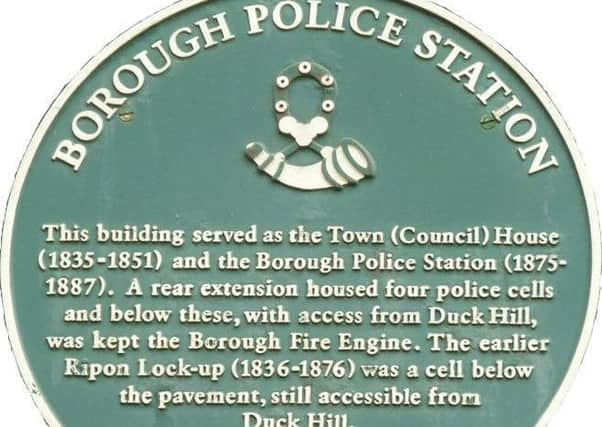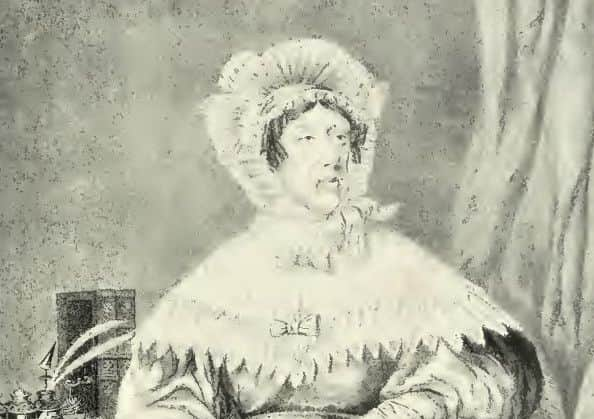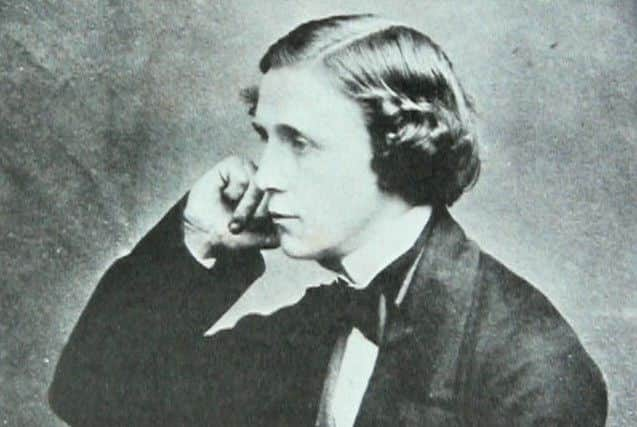The Civic Society column with David Winpenny


9 The Crescent
Lewis Carroll, whose real name was Charles Lutwidge Dodgson, was the son of Archdeacon Dodgson, a Canon of Ripon Cathedral. Charles spent long periods of his youth in Ripon, and regularly visited his friends in the city.
Among them was a family of four children, Margaret, Clara, John and Hugh Cunnynghame, whose father was a chaplain in the city.


Advertisement
Hide AdAdvertisement
Hide AdHe visited them in the first few weeks of the year, and during his holidays from Oxford university, from 1852, when he was 20, until 1868.
On 30 January 1868 he wrote a letter in verse to Margaret – known as Maggie.
It begins: ‘I found that the ‘friend’ that the little girl asked me to write to, lived at Ripon and not at Land’s End – a nice sort of place to invite to! It looked rather suspicious to me – and soon after, by dint of incessant enquiries, I found out that she was called “Maggie” and lived in a “Crescent”.’
Carroll was entertained at the Cunnynghames’ home in the Crescent by Clara’s piano playing; in the second verse of his poem ‘O Caledonian Maiden’ he wrote:


‘I shall think of those half hours
In Ripon spent with you;
I shall dream of great Beethoven
And of Mendelssohn so true.’


Advertisement
Hide AdAdvertisement
Hide AdIn 2003 the garden of 9 The Crescent was redesigned for a BBC television programme called ‘Small Town Gardens’.
Inspired by the Lewis Carroll associations, it was given playing-card-shaped box hedging beds planted with red and white roses, chequerboard paving and wrought iron obelisks.
The Old Hall
The Old Hall (a private house and not open to the public) is one of Ripon’s Grade II-star listed buildings. It was built in 1738 and underwent some alterations in the 19th century.


Archdeacon Charles Dodgson, Lewis Carroll’s father, and his family lived in the house for three months of each year from 1852 to 1858 while he served as a Canon in Residence at the Cathedral. Charles, one of the archdeacon’s 11 children of the Archdeacon, was the eldest boy, and had two older sisters.
Advertisement
Hide AdAdvertisement
Hide AdWhile on holiday from Oxford University, where he was first a student and then a don, Charles was influenced by carvings in the cathedral and by the geography of Ripon, and made friends with local children – not just the Cunnynghames in The Crescent, but also the children of Bishop Robert Bickeresteth.
For the Bickersteth children he wrote ‘The Legend of Scotland’, a comic ghost story set not in the country but in a room called Scotland in Auckland Castle, home of the Bishop of Durham. The tale includes nonsense poems like:
Lorenzo dwelt at Heighington
(His coat was made of dimity)
Least-ways if not exactly there,
Yet in its close proximity.
He called on me – he stayed to tea –
Yet not a word he uttered,
Until I said, ‘D’ye like your bread
Dry?’ and he answered ‘Buttered’.
Another poem, ‘Ye Carpette Knyght’, appeared in ‘The Train’ magazine of March 1856, and was one of the first nonsense poems published under Charles’s pseudonym of Lewis Carroll. It is about a knight whose horse is a clothes horse and his saddle a saddle of mutton. The first verse reads:
I have a horse – a right good horse –
Nor do I envy those
Who scour ye plain in heady course
Till sudden on their nose
They light with unexpected force –
It is – a horse of clothes.
Borough Police Office – 5 Kirkgate
For some of his time in Ripon Lewis Carroll rented rooms in Kirkgate, not far from what was then the Borough Police Station; his youngest brother Edwin was appointed a special constable in 1868 and would have known the building well. But, as well as having a policing role, 5 Kirkgate has an interesting municipal history.
Advertisement
Hide AdAdvertisement
Hide AdWhen the Great Reform Act of 1832 and the Municipal Reform Act of 1835 came into operation, they gave votes to a wider cross-section of the city – and loosened the grip on power of local landowners. Chief among them in Ripon was Mrs Lawrence of Studley Royal, great-granddaughter of William Aislabie.
She had inherited the family’s political hold over the city – which was weakened by the new legislation.
So when Liberal candidates were elected for the borough and for the city council, in opposition to her Tory views, she turfed out the new Liberal council.
They found alternative accommodation first in premises on North Street, then in the Kirkgate building.
Advertisement
Hide AdAdvertisement
Hide AdEventually balance was restored – some Tories were elected, and the council was allowed back into the town hall in 1852, though one commentator wrote that ‘The whole number of twelve Liberals would have been returned but for the mighty influence which Mrs Lawrence, of Studley Hall, possesses over this borough.’
The council also used the premises as the Police Station; there were cells and a lock-up beneath. The city council clung tenaciously to its right to appoint and employ the police, despite several attempts in the mid-19th century to have a county-wide force. In 1856 the town clerk was instructed to write to the city’s MPs about the Police Bill, then being considered by parliament; he was to ‘urge the objectionable nature of the measure, both on account of its unconstitutional interference with the right of local self-government... and the useless and extravagant expense it would entail upon the ratepayers of this city.’
Despite this civic pride, the arrangement didn’t work well; one of the constables was sacked in 1853 because ‘he has on many occasions neglected orders given to him by the mayor and also been absent when his services were required.’
By 1879 the citizens petitioned the council to amalgamate its force with the West Riding Constabulary, though that didn’t happen until 1887, when the police station moved to St Marygate – now the Prison and Police Museum.
In the 20th and early 21st centuries, part of the building was the office of this newspaper, ‘The Ripon Gazette and Observer’, before becoming shops.